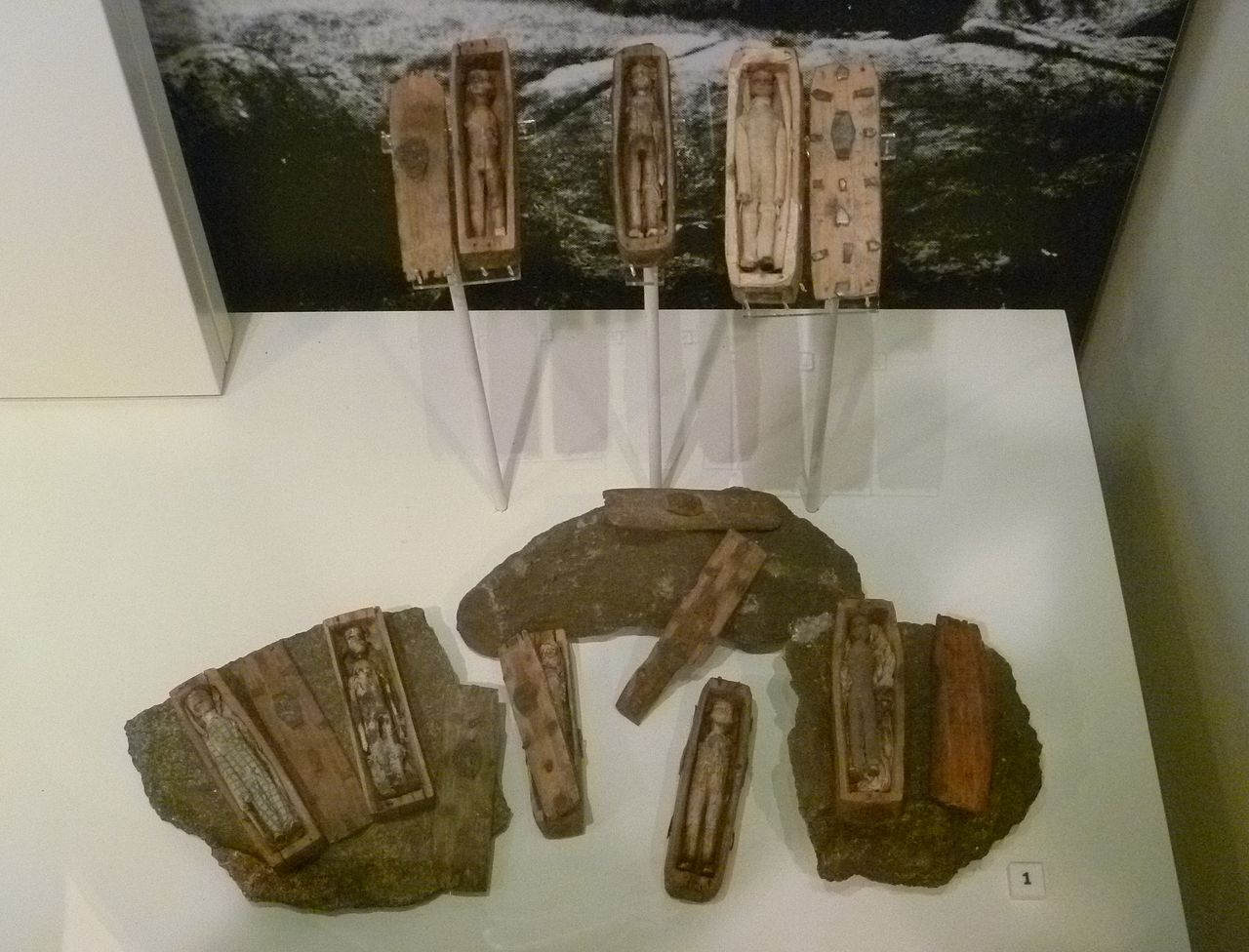Near the city of Edinburgh in Scotland, we find the foothills of Mount Arthur, a small mountain created by a volcano. Rumor has it that King Arthur’s Camelot once stood here, so the place is full of historical and mysterious stories. However, the cliff has a mystery that they have not been able to solve for 200 years, and it also puzzles researchers.
In 1836, a group of young boys went rabbit hunting in the misty hills of Arthur Seat and found 17 palm-sized wooden coffins, the existence of which remains a mystery to historians and researchers two centuries later. The coffins, which were only 95 mm long, were said to have been placed in two rows of eight, with only one coffin standing in the third row. Each coffin contained a small wooden statue, carefully sewn and decorated with unique clothing. She says these were likely made in 1830 IFLS.
The origin and purpose of the remaining eight coffins remains unclear. It could be anything from magic and reburials to serial killer memorabilia to a madman’s obsession. These are the theories that experts have come up with over the decades to try to explain the creation of the small coffins.
What could small coffins be?
With an eccentric history, Arthur’s Seat is an eccentric place. Many experts believe that the woven shapes found in the coffin were intended to represent people targeted by witches. However, statues made for magical purposes were made to destroy, so to speak, as a means of eliminating the enemy they represented. The statues appear to have been made with respect and care and not with malicious intent. Historians say this disproves most of the supposed links to magic.
According to some assumptions, the coffins and their occupants may have been made for alternative burials. The idea first appeared in an article in the Edinburgh Evening Post on 20 August 1836, which suggested that coffins originated from an ancient Saxon custom of burying dead friends in distant lands as effigies. Likewise, on 25 August 1836, the Caledonian Mercury believed the figures represented sailors lost at sea whose wives had attempted a Christian burial.
Although convincing, there is no evidence that this custom was practiced in Scotland. Since the figures are almost identical in shape and size – with wide eyes and pointed noses – it is unlikely that they all represent the same person. Moreover, according to historians, such an alternative burial was supposed to mark a historical event in which 17 people lost their lives, but such a record does not exist.
Strange theories
According to anecdotal claims published by the Edinburgh Evening News in 1836, the miniature tomb may have been the work of a man suffering from mental illness. The anonymous letter published by the newspaper described a strange man who enthusiastically appeared in the city after the discovery of the coffins. At the time, locals speculated that the coffins might have been made by him.
In 1976, Dr. Walter Havimke, director of the Museum für Hamburgische in Germany, linked the coffins to a belief in the supernatural properties of the mandrakes found in the coffin. According to some traditions, mandrake roots are buried in miniature coffins to represent good luck and beneficial spirits to their owner. According to Havemek, the coffins found at Arthur’s Seat may have been used as a hideout.
The most interesting theory is that the coffins were made and hidden by the notorious 19th century serial killer duo William Burke and William Hare. In connection with the series of events known as the Westport Murders. Burke and Hare were responsible for the deaths of 16 people between 1827 and 1828, and their bodies were sent to medical students of the time for dissection.
The theory proposed in an issue of the Journal of Edinburgh History, published by the Old Edinburgh Club Historical Group, is that the murderers created the coffins and their occupants to commemorate their victims.
Mysterious coffins, which have no explanation, remain as mysterious in the 21st century as they were almost two centuries ago. Today, the coffins are placed and displayed in the National Museum of Scotland.
These articles are also worth reading:












































